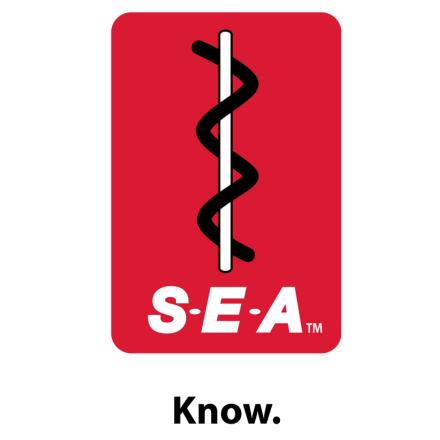Court System Summary TexasAt Themis Advocates Group, we are committed to providing invaluable resources to members and clients alike.
Name of Preparer: Meggan E. Parks Firm: Sheehy, Ware & Pappas, P.C. City and State of Firm: Sheehy, Ware & Pappas, P.C. Overview of State of Texas Court SystemCourt levels: 3 Trial courts: over 450 state district courts, over 500 county courts, over 800 Justice of the Peace courts, and over 900 municipal courts. Courts of Appeals: 14 Highest courts: Texas Supreme Court (Civil); Texas Court of Criminal Appeals (Criminal) A. Trial Courts1. District Courts (a) District Courts are the primary Texas trial courts and have jurisdiction over all proceedings except those reserved exclusively to other courts. These courts are established by Article 5, Section 8 of the Texas Constitution and each county in Texas is served by at least one district court. (b) District courts have original jurisdiction over all types of claims which justice courts and constitutional county courts do not have jurisdiction, regardless of amount in controversy. See Tex. Gov. Code §§ 26.043, 27.031(b). (c) District courts maintain the subject matter jurisdiction for all matters that do not by default fall under any other court. This is called residual jurisdiction. What this means is that if no other court, tribunal, or administrative hearing board has jurisdiction over the claim, the District Court is the “fall back” court. 2. Constitutional County Courts (a) Constitutional county courts are established pursuant to the Texas Constitution, Article 5, Section 16, but are implemented by statutes contained in the Government Code which vary jurisdiction by county. Usually, these courts have jurisdiction in which the amount in controversy is $200.01 through $10,000. (b) A constitutional county court does not have jurisdiction in: (1) a suit to recover damages for slander or defamation; (2) a suit for the enforcement of a lien on land; (3) a suit on behalf of the state for escheat; (4) a suit for divorce; (5) a suit for the forfeiture of a corporate charter; (6) a suit for the trial of the right to property valued at $500 or more and levied under a writ of execution, sequestration, or attachment; (7) eminent domain case; or (8) a suit for the recovery of land. See Tex. Gov’t Code § 26.043. (c) A constitutional county court has original concurrent jurisdiction over civil actions:
(d) Generally, constitutional county courts have appellate jurisdiction over cases arising in the justice courts or small claims court when the judgment rendered exceeds $250, exclusive of costs. Review is by trial de novo. See Tex. Civ. Prac. Rem. Code § 51.001. 3. Statutory County Courts (a) Statutory county courts, sometimes referred to as “county courts at law” or “legislative county courts,” are courts created by the Texas Legislature, as authorized by Article 5, Section 1 of the Texas Constitution. This power enables the Legislature to create statutory district courts with limited jurisdiction. However, the Legislature has great leeway to change a “statutory” court into a constitutional district court by increasing its jurisdiction to constitutional proportions. For example, the Legislature has created statutory county courts with concurrent jurisdiction to district courts. (b) There are some general jurisdictional rules for the jurisdiction of statutory county courts, which may be altered by specific statute. See Tex. Gov’t Code § 25.0003.
4. Justice Courts (a) Justice Courts have exclusive original jurisdiction over civil cases when the amount in controversy is $200 or less. Texas Constitution, Art. 5, § 19. (b) <effective until September 1, 2020> Justice Courts share concurrent original jurisdiction with the county courts in civil cases where the amount in controversy exceeds $200 but does not exceed $10,000, exclusive of interest. Tex. Gov’t Code § 27.042. (c) <effective September 1, 2020> Justice Courts share concurrent original jurisdiction with the county courts in civil cases where the amount in controversy exceeds $200 but does not exceed $20,000, exclusive of interest. Tex. Gov’t Code § 27.042. (d) They have original jurisdiction over forcible entry and detainer cases. Tex. Gov’t Code § 27.031(a)(2). (e) They do not have jurisdiction of: (1) a suit on behalf of the state to recover a penalty, forfeiture, or escheat; (2) a suit for divorce; (3) a suit to recover damages for slander or defamation; (4) a suit for the trial of title to land; or (5) a suit for the enforcement of a lien on land. Tex. Gov’t Code § 27.031. 5. Small Claims Courts (a) Effective August 31, 2013, the small claims courts were abolished. Acts 2011, 82nd Leg., R.S., ch. 3, § 5.06, 2011 Tex. Sess. Law Serv. 3. As of August 31, 2013, a justice court will conduct proceedings in a small claims case, which is defined as a lawsuit brought for the recovery of money damages, civil penalties, personal property, or other relief allowed by law. Tex. Gov’t Code § 27.060(a); Tex. R. Civ. P. 500.3. The claim can be for no more than $10,000, excluding statutory interest and court costs but including attorney fees, if any. Tex. R. Civ. P. 500.3(a). B. Appellate Courts
C. Supreme Court1. Jurisdiction: Final appellate jurisdiction in civil and juvenile cases (a) The Supreme Court of Texas was first established in 1836 by the Constitution of the Republic of Texas, which vested the judicial power of the Republic in “...one Supreme Court and such inferior courts as the Congress may establish.” This court was re-established by each successive constitution adopted throughout the course of Texas history and currently consists of one chief justice and eight justices. (b) The Supreme Court has statewide, final appellate jurisdiction in most civil and juvenile cases. Its caseload is directly affected by the structure and jurisdiction of Texas’ appellate court system, as the courts of appeals handle most of the state’s criminal and civil appeals from the district and county-level courts, and the Court of Criminal Appeals handles all criminal appeals beyond the intermediate courts of appeals. (c) The Supreme Court’s caseload can be broken down into three broad categories:
(d) Much of the Supreme Court’s time is spent determining which petitions for review will be granted, as it must consider all petitions for review that are file However, the Court exercises some control over its caseload in deciding which petitions will be granted. The Court usually takes only those cases that present the most significant Texas legal issues in need of clarification. (e) The Supreme Court also has jurisdiction to answer questions of state law certified from a federal appellate court; has original jurisdiction to issue writs and to conduct proceedings for the involuntary retirement or removal of judges; and reviews cases involving attorney discipline upon appeal from the Board of Disciplinary Appeals of the State Bar of Texas. (f) In addition, the Court:
2. Courthouse is located in Austin. Note: The Court of Criminal Appeals is the highest state court for criminal appeals, including exclusive appellate jurisdiction over death penalty cases. Procedural OverviewVenue 1. General Venue Rule: Texas law has a general venue rule which will ordinarily govern choice of venue: Except as otherwise provided by this general rule or mandatory venue exceptions or permissive venue exceptions, all lawsuits shall be brought:
Tex. Civ. Prac. & Rem. Code § 15.002 2. Exceptions to General Venue Rule: Texas statutes contain numerous exceptions to the general rule above. Some of the exceptions overlap and many are contained in Chapter 15 of the Texas Civil Practices and Remedies Code. These statutory exceptions may be mandatory or permissive. Permissive exceptions do not override the general rule and provide alternative venue choices to plaintiffs. If mandatory venue applies, venue is not proper elsewhere, if a defendant chooses to challenge venue by a proper motion to transfer venue. “Proper venue” means:
Tex. Civ. Prac. & Rem. Code § 15.001. Generally, if venue is proper as to one of several claims made against the same defendant, other claims against that defendant that are properly joined can be litigated in the same venue. Middlebrook v. David Bradley Mfg. Co., 26 S.W.935 (Tex. 1894). If venue is proper as to one defendant, it is proper for all defendants who are properly joined. Tex. Civ. Prac. & Rem. Code § 15.005. In a lawsuit in which two or more defendants are joined, any action or omission by one defendant in relation to venue, including a waiver or venue by one defendant, does not operate to impair or diminish the right of any other defendant to properly challenge venue. Tex. Civ. Prac. & Rem. Code § 15.0641. Statute Of LimitationsBelow is a summary of civil statutes of limitations in Texas:
Texas statutes provide limitations periods for many causes of actions:
A number of governmental units are statutorily exempt from many limitations periods. Tex. Civ. Prac. & Rem. Code §16.061(a). Tolling: A limitations period can be tolled on any one of the following grounds: (1) plaintiff’s disability, (2) plaintiff’s military service, (3) party’s death, (4) defendant’s absence from the state, (5) original court’s lack of jurisdiction, and (6) plaintiff misnaming of defendant in petition. See Tex. Civ. Prac. & Rem. Code §§16.001, 16.022, 16.062, 16.063, 16.064. Responsive PleadingAnswer (a) Defendant must file its answer by 10:00 a.m. on the first Monday after the expiration of 20 days from the date the defendant was served with citation. Tex. R. Civ. P. 99(b). If the 20th day after service falls on a Monday, the answer is due on the next Monday. If the first Monday after 20 days is a legal holiday, the answer is due on Tuesday. Tex. R. Civ. P. 4. To calculate the 20 days, count every day after the first day-including weekends and legal holidays-until the last day. Tex. R. Civ. P. 4. An answer is timely if the defendant puts it in the custody of the USPS before 10:00 a.m. on the due date, as long as the clerk receives it no later than 10 days after the due date. (b) An answer may contain a general denial. See Tex. R. Civ. P. 92. (c) If a defendant wants to rely on an affirmative defense, it must be specifically pled. Tex. R. Civ. P. 94. Texas Rule of Civil Procedure 93 contains a list of defenses, pleas, and other matters that must be verified. Motion to Dismiss – Baseless Cause of Action (a) Prior to 2013, Texas did not have a counterpart to the Federal Rule 12(b)(6) motion to dismiss for failure to state a claim. (b) In 2013, Texas added Texas Rule of Civil Procedure 91a, which is similar to Federal Rule of Civil Procedure 12(b)(6). It provides for the dismissal of a cause of action that has no basis in law or fact. TRCP 91a allows the court to quickly dispose of a baseless cause of action as a matter of law without considering any evidence.
(c) In a civil action commenced before September 1, 2019, the trial court must award costs and reasonable attorney fees to the prevailing party. (d) For actions commenced on or after September 1, 2019, an award of attorney fees and costs to the prevailing party on a TRCP 91a motion to dismiss is within the court’s discretion. (e) Rule 91a is a risk shifting mechanism –it shifts the economic risks of litigation. Dismissal & Re-Filing of Suit
LiabilityNegligence1. Elements (a) The elements of negligence are that (1) the defendant owed the plaintiff a duty of care, (2) the defendant breached that duty of care, and (3) the breach of duty proximately caused the plaintiff’s injury or damages. Nabors Drilling, U.S.A., Inc. v. Escoto, 288 S.W.3d 401, 404 (Tex. 2009). (b) Duty: In deciding whether there is a common law duty, courts apply the risk-utility test and consider whether there was a special relationship between the parties. The factors the courts use when applying the risk-utility test are the risk, foreseeability, and likelihood of injury weighed against the social utility of the actor's conduct, the magnitude of the burden of guarding against the injury, and the consequences of placing the burden on the defendant. Pagayon v. Exxon Mobil Corp., 536 S.W.3d 499, 503 (Tex.2017). The most important factor is the foreseeability of the risk. City of Waco v. Kirwan, 298 S.W.3d 618, 623-24 (Tex. 2009). Foreseeability requires only that the general danger, not the exact sequence of events that produced the harm, be foreseeable. Mellon Mortg. Co. v. Holder, 5 S.W.3d 654, 655 (Tex.1999) (plurality op.). (c) Breach: An ordinary defendant (i.e., nonprofessional) breaches its duty of care to plaintiff when the defendant fails to exercise the degree of care that a person of ordinary prudence would or would not have done under the same or similar circumstances. See Colvin v. Red Steel Co., 682 S.W.2d 243, 245 (Tex. 1984). When a duty requires the defendant to exercise a “high degree of care,” the defendant’s standard of care is defined as what a very cautious and prudent person would or would not have done under the same or similar circumstances. Speed Boat Leasing, Inc. v. Elmer, 124 S.W.3d 210, 212 (Tex. 2003). A high degree of care applies to activities conducted by a common carrier. Id. The term “common carrier” has been defined as “those in the business of carrying passengers and goods who hold themselves out for hire by the public.” Id. (d) Causation: The components of proximate cause are (1) cause-in-fact and (2) foreseeability. Western Invs. V. Urena, 162 S.W.3d 547, 551 (Tex. 2005). The test for cause-in-fact is whether the negligent act or omission was a substantial factor in bringing about injury and whether the injury would have occurred without the act or omission. Del Lago Partners v. Smith, 307 S.W.3d 762, 774 (Tex.2010). 2. Defenses (a) Contributory/Comparative Negligence: In Texas, contributory and comparative negligence are governed by Texas Civil Practice and Remedies Code §§ 33.001-33.017. Chapter 33 applies to any cause of action based in tort. The trier of fact, as to each cause of action asserted, shall determine the percentage of responsibility, stated in whole numbers for each claimant, defendant, settling person and designated responsible third party with respect to each person’s causing or contributing to cause in any way the harm for which recovery of damages is sought. A claimant may not recover damages if his percentage of responsibility is greater than 50%. If the claimant is not barred from recovery, the court shall reduce the amount of damages to be recovered by the claimant with respect to a cause of action by a percentage equal to the claimant’s percentage of responsibility. A liable defendant is liable to a claimant only for the percentage of the damages found by the trier of fact equal to that defendant’s percentage of responsibility. (b) Workers’ Compensation Exclusive Remedy: An employer-defendant can assert that the exclusive-remedy provision of the Workers' Compensation Act (Comp Act) bars an employee-plaintiff's suit for negligence if the defendant is a subscriber to workers' compensation insurance and thus subject to the Comp Act. (c) Assumption of Risk: Assumption of the risk has been abolished as an affirmative defense to negligence actions in most situations in Texas and now is only used as a factor in determining proportionate responsibility. See Del Lago Patners v. Smith, 307 S.W.3d 762, 772 (Tex. 2010.) However, assumption of the risk is still an affirmative defense in three instances: (1) in strict-liability cases; (2) cases in which there is a knowing and express oral or written consent to the dangerous activity or condition and (3) when the plaintiff is committing a felony or attempting to commit suicide. See Tex. Civ. Prac. & Rem. Code § 93.001. (d) Last Clear Chance: The last clear chance doctrine has been abolished in Texas by adoption of the proportionate responsibility statutes. French v. Grisby, 571 S.W.2d 867 (Tex. 1978). (e) Sudden Emergency Doctrine: Under the "sudden emergency doctrine," if a person is confronted by an emergency arising suddenly and unexpectedly, which was not proximately caused by any negligence on his part and which, to a reasonable person, requires immediate action without time for deliberation, his conduct in such an emergency is not negligence or failure to use ordinary care if, after such emergency arises, he acts as a person of ordinary prudence would have acted under the same or similar circumstances. McDonald Transit, Inc. v. Moore, 565 S.W.2d 43, 44-45 (Tex.1978).
(f) Unavoidable Accident: An “unavoidable accident” is an event proximately caused by an unforeseeable, nonhuman condition, not by the negligence of any party. Dillard v. Texas Elec. Co-Op., 157 S.W.3d 429, 432 (Tex. 1995). Unavoidable accident instructions ordinarily are used in cases to inquire about the causal effect of some physical condition or circumstance, such as “fog, snow, sleet, wet or slick pavement, or obstruction of view,” or to resolve a case involving “a very young child [who is] legally incapable of negligence.” Id. The purpose of an unavoidable-accident instruction is to ensure that jurors will understand they do not necessarily have to find that one of the parties to the suit was to blame for the occurrence. Bed, Bath & Beyond, Inc. v. Urista, 211 S.W.3d 753, 757 (Tex.2006). Gross Negligence1. Gross negligence: In order to make a claim for exemplary damages, a plaintiff must show that the injury resulted from the Defendant’s gross negligence, fraud, or malice. Tex. Civ. Prac. Rem. Code Ann. §41.003(a). “Malice” is defined as specific intent by the Defendant to cause substantial injury or harm to the claimant. Tex. Civ. Prac. Rem. Code Ann. §41.001(7). “Gross negligence” means an act or omission: (A) which when viewed objectively from the standpoint of the actor at the time of its occurrence involves an extreme degree of risk, considering the probability and magnitude of the potential harm to others; and (B) of which the actor has actual, subjective awareness of the risk involved, but nevertheless proceeds with conscious indifference to the rights, safety, or welfare of others. Tex. Civ. Prac. Rem. Code Ann. §41.001(11). Negligent Hiring, Supervision, Retention, and Entrustment1. Negligent hiring, supervision, and retention: An employer owes a duty to its other employees and to the general public to ascertain the qualifications and competence of the employees it hires, especially when the employees are engaged in occupations that require skill or experience and that could be hazardous to the safety of others. Morris v. JTM Materials, Inc. 78 S.W.3d 28, 49 (Tex.App.-Fort Worth 2002, no pet.) Therefore, an employer is liable for negligent hiring, retention, or supervision if it hires an incompetent or unfit employee whom it knows, or by the exercise of reasonable care should have known, was incompetent or unfit, thereby creating an unreasonable risk of harm to others. Id. (a) Claims against an employer for negligently hiring, supervising, training, or retaining an employee are based on direct liability, not on vicarious liability. Soon Phat, L.P. v. Alvarado, 396 S.W.3d 78, 100-01 (Tex.App.—Houston [14th Dist.] 2013, pet. denied). The elements of a negligence action are a duty, a breach of that duty, and damages proximately caused by the breach. Greater Houston Transp. Co. v. Phillips, 801 S.W.2d 523, 525 (Tex.1990). A motor carrier has a duty to take steps to prevent injury to the driving public by determining the competency of a job applicant to drive one of its trucks. Guidry v. Nat'l Freight, Inc., 944 S.W.2d 807, 810 (Tex.App.-Austin 1997, no writ). The purpose of this duty is to promote highway safety and prevent motor vehicle accidents. Id.; 49 C.F.R. § 383.1( (2000).To prove an action for negligent hiring, supervision, training, or retention of an employee, the plaintiff must establish that the employer breached a duty owed to the plaintiff. To prove a breach of duty, the plaintiff must establish that (1) the employer was negligent and (2) the employee committed an actionable tort. Brown v. Swett & Crawford, 178 S.W.3d 373, 384 (Tex.App.—Houston [1st Dist.] 2005, no pet.) (b) The plaintiff must establish that the employer’s breach proximately caused the plaintiff’s injuries. LaBella v. Charlie Thomas, Inc., 942 S.W.2d 127, 137 (Tex.App.-Amarillo 1997, writ denied.) The risk of harm that caused the hiring to be negligent must be the same risk that proximately caused the plaintiff’s injuries. 2) Negligent Entrustment: To prove a claim of negligent entrustment of a motor vehicle, the plaintiff must show that: (1) The owner of a vehicle entrusted it to another person; (2) that person was an unlicensed, incompetent, or reckless driver; (3) the owner knew or should have known that the driver was unlicensed, incompetent, or reckless; (4) the driver was negligent on the occasion in question; and (5) the driver's negligence proximately caused the plaintiff's injury. 4Front Engineered Solutions, Inc. v. Rosales, 505 S.W.3d 905, 909 (Tex.2016). (a) Whether an owner has a duty to inquire about a driver’s driving history is a question of law. Bartley v. Budget Rent-A-Car Corp., 919 S.W.2d 747, 752 (Tex.App.-Amarillo 1996, writ denied). If a license is required by law to operate the vehicle and the driver shows the owner a valid, unrestricted license to operate it, the owner generally has no duty to further investigate the driver's history. Id. (b) The plaintiff must establish that the driver was negligent. Goodyear Tire & Rubber Co., v. Mayes, 236 S.W.3d 754, 758 (Tex. 2007). A high degree of care is required in negligent-entrustment cases when the driver is operating as a common carrier. Durham Transp. v. Valero, 897 S.W.2d 404, 408-09 (Tex.App.-Corpus Chirsit 1995, writ denied). Dram ShopThe Texas Legislature enacted the Dram Shop Act to discourage providers of alcoholic beverages from serving alcoholic beverages to obviously intoxicated individuals who may inflict serious injury on themselves or others. F.F.P. Oper. Partners v. Duenez, 237 S.W.3d 680, 683 (Tex. 2007). To prove an action for providing alcohol to an intoxicated adult, the plaintiff must prove it was apparent to the defendant when the alcohol was provided that the recipient of the alcoholic beverage was obviously intoxicated and presented a clear danger to herself and others. Tex. Alco. Bev. Code. § 2.02(b)(1). A liable defendant must be a “provider.” Id. at § 2.03. A provider is a person who sells or serves alcoholic beverages. Id. at § 2.01. A social host who serves alcoholic beverages to adult guests is not a provider if the beverages are served without charge. Smith v. Merritt, 940 S.W.2d 602, 605 (Tex. 1997). An individual is obviously intoxicated if a reasonably prudent person would have recognized the individual as intoxicated. Fay-Ray Corp. v. Tex. Alcoholic Bev. Comm’n, 959 S.W.2d 362, 366 (Tex.App.-Austin 1998, no pet.). An individual’s obvious intoxication can be shown by direct evidence, i.e., proof of amount of alcohol he was served, or circumstantial evidence, e.g., blood alcohol level of individual after accident. Venetoulias v. O’Brien, 909 S.W.2d 236, 240 (Tex.App.-Houston [14th Dist.] 1995, writ dism’d); Bruce v. K.K.B., Inc., 52 S.W.3d 250, 255 (Tex.App.-Corpus Christi 2001, pet. denied). Joint and Several Liability1) A defendant is jointly and severally liable if:
2) Joint and several liability is covered by the proportionate responsibility statutes of the Texas Civil Practice and Remedies Code § 33. Each defendant is liable only for a percentage of damages equal to the defendant’s percentage of responsibility. Id. at § 33.013. If the defendant is not jointly and severally liable, the defendant is liable only for the percentage of damages equal to that defendant’s own percentage of responsibility. Id. As among themselves, each of the defendants who is jointly and severally liable under Section 33.013 is liable for the damages recoverable by the claimant under Section 33.012 in proportion to his respective percentage of responsibility. Id. at § 33.015. A jointly and severally liable defendant who paid more than its share of the plaintiff’s damages can seek contribution from another defendant that paid less than its own share.Id. 3)Determining a plaintiff’s recovery: the total amount the plaintiff can recover is reduced by (1) the plaintiff's percentage of responsibility and (2) a credit for any settlements the plaintiff has made. The plaintiff's recovery is reduced (or barred) by its own percentage of responsibility for the harm. If the plaintiff's percentage of responsibility is 51% or more, the plaintiff cannot recover any damages. Tex. Civ. Prac. & Rem. Code § 33.001; In re Xerox Corp., 555 S.W.3d 518, 524 (Tex.2018). If more than one plaintiff is found responsible for the harm, however, the plaintiffs' percentages of responsibility cannot be combined to reach the 51% threshold and bar them from recovering damages. See Sanchez v. Brownsville Sports Ctr., Inc., 51 S.W.3d 643, 656 (Tex.App.—Corpus Christi 2001, pet. granted, judgm't vacated w.r.m.). If the plaintiff's percentage of responsibility is 50% or less, the court must reduce the amount of the plaintiff's recovery by that percentage. Nabors Well Servs. v. Romero, 456 S.W.3d 553, 560 (Tex.2015); see Tex. Civ. Prac. & Rem. Code § 33.012(a); Ryder Integrated Logistics, Inc. v. Fayette Cty., 453 S.W.3d 922, 930–31 (Tex.2015). For example, a plaintiff who is 20% responsible for $10,000 in damages can recover a maximum of $8,000 because its recovery must be reduced by 20%, or $2,000. 4) Practical effect (i.e., still liable for whole even when only partially at fault but other defendants cannot be found or are insolvent): The person against whom a judgment is rendered may recover from each codefendant an amount determined by dividing the number of all liable defendants into the total amount of the judgment. If a codefendant is insolvent, the person may recover from each solvent codefendant an amount determined by dividing the number of solvent defendants into the total amount of the judgment. Those solvent defendants have a right to recover from the insolvent defendant the amount the solvent defendants had to pay because of the insolvency. Tex. Civ. Prac. & Rem. Code Ann. § 32.003. Wrongful Death and/or Survival Actions1) Wrongful Death: Suits for wrongful death are brought under Texas Civil Practice and Remedies Code §§ 71.001-71.012. The surviving spouse, children and parents of the deceased may bring the action. If none of these individuals have brought an action within three months after the death of the injured individual, then the executor or administrator shall bring the action. a) A person is liable for damages arising from an injury that causes an individual's death if the injury was caused by the person's or his agent's or servant's wrongful act, neglect, carelessness, unskillfulness, or default. 1. Survival Actions: Suits for survival actions for personal injuries to a decedent are brought under Texas Civil Practice and Remedies Code § 71.021. A cause of action for personal injury to the health, reputation, or person of an injured person does not abate because of the death of the injured person or because of the death of a person liable for the injury. Id. Survival actions may be brought by either the personal representative of the estate or an heir of the decedent. Id. 2. Wrongful death and survival actions are wholly derivative of the Decedent’s rights. Russell v. Ingersoll-Rand Co., 841 S.W.2d 343, 345 (Tex. 1992). An individual’s beneficiaries may only bring an action if the individual injured would have been entitled to bring any action for the injury if he had lived. Tex. Civ. Prac. & Rem. Code §71.003. Vicarious Liability /Respondeat Superior1. Principal-Agent Liability: A principal can be held vicariously liable for the contracts and torts of its agent acting within the scope of the agent’s actual authority. See Great Am. Life Ins. v. Lonze, 803 S.W.2d 750, 754 (Tex.App.—Dallas 1990, writ denied). An agent has actual authority if the principal intentionally confers authority on the agent, intentionally allowed the agent to believe it had authority, or through lack of due care, allowed the agent to believe it had authority. Texas Cityview Care Ctr., L.P. v. Fryer, 227 S.W.3d 345, 352 (Tex.App.-Fort Worth 2007, pet dism’d). Under the theory of apparent authority, a principal can be held vicariously liable for the acts of its agents who are acting outside the scope of their authority, and for the acts of nonagents.See Baptist Mem'l Hosp. Sys. v. Sampson, 969 S.W.2d 945, 949 (Tex.1998). An agent has apparent authority if the principal affirmatively held the agent or nonagent out as having authority to act on the principal’s behalf, knowingly permitted the agent or nonagent to hold itself out as having authority; or acted with such a lack of ordinary care as to clothe the agent or nonagent with the indicia of authority. Baptist Mem’l Hosp. Sys. v. Sampson, 969 S.W.2d 945, 948-49 (Tex.1998). 2. Respondeat Superior: Under the theory of respondeat superior, an employer is vicariously liable for the torts of an employee acting within the scope of employment even though the employer did not personally commit the tort. Ineos USA, LLC v. Elmgren, 505 S.W.3d 555, 565 (Tex.2016). Whether a tortfeasor is an employee depends on the defendant's right to assign tasks and to control the progress, details, and means of accomplishing those tasks. Limestone Prods. Distrib. v. McNamara, 71 S.W.3d 308, 312 (Tex.2002). An employee is acting within his/her scope of employment if the act was within the employee’s general authority, in furtherance of the employer’s business and for the accomplishment of the object for which the employee was hired. Minyard Food Stores v. Goodman, 80 S.W.3d 573, 577 (Tex. 2002). 3. Independent Contractor Doctrine
a) Exception: Art. XVI, § 26 of the Texas Constitution and § 408.001(b) of the Texas Labor Code carve out a small exception to the general rule of exclusivity. Specifically, this body of law allows a small class of individuals to recover exemplary damages from a subscribing employer for the death of an employee. Article XVI, § 26 of the Texas Constitution defines this small class of designated individuals as follows: Every person, corporation, or company, that may commit a homicide, through wilful act, or omission, or gross neglect, shall be responsible, in exemplary damages, to the surviving husband, widow, heirs of his or her body, or such of them as there may be, without regard to any criminal proceeding that may or may not be had in relation to the homicide. The Texas Labor Code defines the class identically. Specifically, § 408.001 provides that: Thus, although the Texas Constitution establishes an exception to the general rule of exclusivity, the exception applies only to the employee’s spouse and ‘heirs of the body.’ Courts have consistently interpreted ‘heirs of the body’ to include only children ‘begotten by the person.’ Houston & Tex. Central Railway Co. v. Baker, 57 Tex. 419, 425 (1882). 2. An individual’s beneficiaries may only bring an action if the individual injured would have been entitled to bring an action for the injury if he had lived or been born alive. TEX. CIV. PRAC. & Rem. Code Ann. §71.003. Because of this provision, the Decedent would not have been able to bring any of these claims against his or her employer had he lived, because such claims would have been barred under the exclusive remedies provisions of the Texas Workers’ Compensation Act. See Tex. Lab. Code, Ann. § 408.001. Again, the only grounds for recovery against a defendant in such cases are those for exemplary damages by the surviving spouse or heirs of the body. a) Moreover, “a decedent’s parents are not ‘begotten by him’ and are not included in the class constitutionally permitted to recover exemplary damages . . .” against the employer under Section 408.001. McKethan v. McKethan, 728 S.W.2d 856, 857 (Tex. App.—Houston [1st Dist.] 1987, no writ) citing Hofer v. Lavender, 679 S.W.2d 470 (Tex. 1984). Accordingly, parents may not recover exemplary damages from an employer pursuant to the death of an employee.
DAMAGESStatutory Caps on DamagesTexas has no statutory cap on actual damages. Compensatory Damages for Bodily Injury
Collateral Source
Pre-Judgment/Post-Judgment Interest1. Prejudgment interest is compensation for the lost use of money owed as damages. a. It is computed from the accrual of the plaintiff’s claim to the date of judgment. Phillips v. Bramlett, 407 S.W.3d 229, 238 (Tex.2013); Brainard v. Trinity Univ’l Ins., 216 S.W.3d 809, 812 (Tex. 2006). b. It can be recovered by statute or under general principles of equity. Johnson & Higgins v. Kenneco Energy, Inc., 962 S.W.2d 507, 528 (Tex. 1998). c. It is not recoverable on: 2. Postjudgment Interest is compensation for the use or detention of money. |













